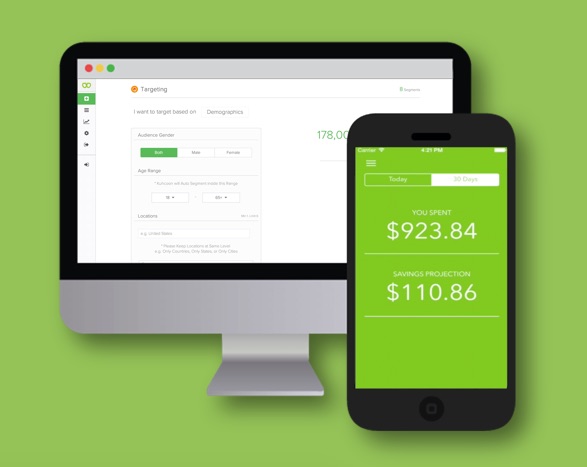
A lot of ad tech companies like to talk about automation, but Andrew Torba, co-founder and CEO of Kuhcoon, seems particularly enthusiastic: “Our grand plan is to automate all of paid media spending on the Internet.”
The startup isn’t quite there yet, but it says it’s already working with more than 6,000 advertisers in 90+ countries. (Those advertisers include a number of startups at Y Combinator, where Kuhcoon is part of the winter class.) It’s currently limited to Facebook advertising, but Torba said Kuhcoon’s Google Adwords launch is imminent, and there are plans for Twitter and Pinterest as well.
Torba and his co-founder/CTO Charles Szymanski acknowledged that there are other Facebook ad automation products out there. However, Szymanski suggested that the ones that offer “full automation,” like Nanigans and Kenshoo, are focused on huge advertisers. When it comes to small and medium businesses (Torba said Kuhcoon serves advertisers who spend between $20,000 and $1 million a month, with a focus on those who spend less than $100,000), the available tools are more manual.
“What AdEspresso does, they’ll say, ‘This ad isn’t performing well, you should pause it,'” Torba said. “We’re actually going to pause it for you.”
Sounds pretty simple, right? Well, Szymanski said that it required a lot of development to actually turn what he and Torba had learned about social media advertising into an automated process.
One of the main points of differentiation is how Kuhcoon optimizes its campaigns. Through the normal testing process, an advertiser might upload a bunch of different ads into Facebook, test them all out on day one, then focus on the ad that saw the best results. That can waste a lot of money, Szymanski said, but the real problem is that “you’re actually competing with Facebook’s own optimization algorithms.” In other words, when you upload a bunch of possible ads in one campaign, Facebook will choose the version that will probably do best, and the rest might just sit there.
Kuhcoon, on the other hand, will usually only run one ad at a time for each audience segment, rotating between different variants over the course of the campaign.
“We don’t just let Facebook take a guess for us,” Szymanski said.

The pair walked me through the campaign creation process, which is pretty straightforward. You enter your goals and budget, upload your creative assets, then Kuhcoon takes over pretty quickly, starting and optimizing the campaign without additional work on your end, though you can monitor the results (either from desktop or through the mobile app) and tweak the campaign as often or as little as you like.
Torba suggested that once Kuhcoon expands, it can also automate how money is spent on different platforms, though you’ll also have the option to direct 60 percent of your spending to Facebook and 40 percent to Google, or whatever.
I haven’t run any Facebook ad campaigns myself, but the Kuhcoon website features some enthusiastic customer testimonials. For example, Brian Chen, co-founder of YC-backed suitcase tracker BlueSmart, says Kuhcoon “gives me back several hours of my day, saving me the trouble of creating ad sets, A/B testing those ads, and generally getting mired in Facebook’s clunky Ads Manager.”
Kuhcoon says it saves advertisers 40 percent of their spending and more than 20 hours a week, on average.
Comments
Post a Comment